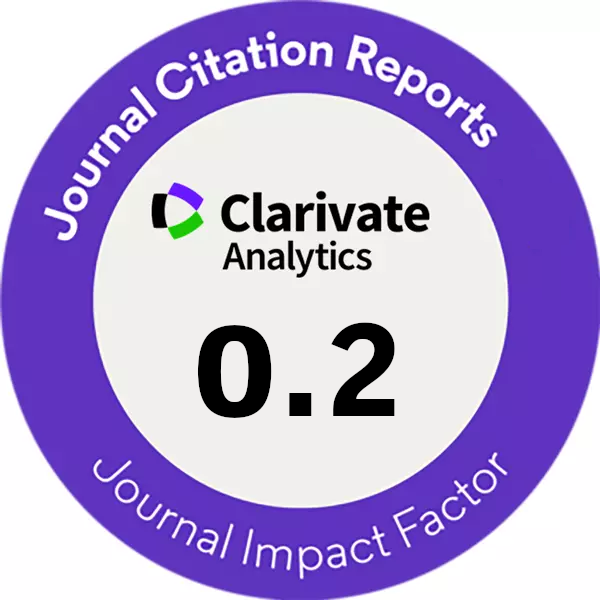TESTING OF CLOSE-RANGE PHOTOGRAMMETRY AND LASER SCANNING FOR EASY DOCUMENTATION OF HISTORICAL OBJECTS AND BUILDINGS PARTS
DOI:
https://doi.org/10.14311/CEJ.2023.04.0038Keywords:
Photogrammetry, Laser scanning, Cultural heritage, Object documentation, ViDOCAbstract
In contemporary times, technology has dramatically simplified the process of documenting cultural heritage objects. This paper aims to illustrate modern methodologies for documenting historical monuments by applying advanced technologies, as these case studies show. Two technologies were used: laser scanning and digital photogrammetry. The first subject of our study was a historically significant 16th-century building located in Jachymov, situated in the North-West region of the Czech Republic. The object was documented by laser scanning (BLK360) and using a standard digital camera Canon Powershot SX230 HS. The laser scanning data were post-processed using Cyclone Register 360 Plus, while photogrammetric point clouds were generated with Agisoft Metashape. The second objects were a building and a sculpture in the historical UNESCO city of Telč; here laser scanning instruments, digital photogrammetry and a new one low-cost ViDoc documentation system were use. Our study is focused on analyzing the sets of point clouds obtained from the data processing, conducted using CloudCompare to draw insights and conclusions. It turns out that the rapid development of techniques and technology makes it possible to use low-cost devices for sufficiently accurate and fast documentation; however, the mentioned ViDOC device can only be used for very close and small objects up to about 5 meters. For the documentation of sculptures, classic close-range photogrammetry is especially appropriate; for the documentation of buildings, laser scanners are suitable; the problem here is with hidden spaces and it is often necessary to use either a platform or a combination with photogrammetry using a drone, especially for the upper parts of the object.
Downloads
References
[[1] Pavelka, K., Raeva, P., Pavelka jr., K., Kýhos, M., and Veselý, Z. 2022. Analysis of Data Joining from Different Instruments for Object Modelling, Int. Arch. Photogramm. Remote Sens. Spatial Inf. Sci., XLIII-B2-2022, 853–860, https://doi.org/10.5194/isprs-archives-XLIII-B2-2022-853-2022
Petrovič, D., Grigillo, D., Kosmatin Fras, M., Urbančič, T., Kozmus Trajkovski, K. 2021 Geodetic Methods for Documenting and Modelling Cultural Heritage Objects, International Journal of Architectural Heritage, 15:6, 885-896, https://doi.org/10.1080/15583058.2019.1683779
Luhmann, T., Chizhova, M., Gorkovchuk, D., Hastedt, H., Chachava, N., Lekveishvili, N. 2019. Combination of Terrestrial Laserscanning, UAV and Close-Range Photogrammetry for 3D Reconstruction of Complex Churches in Georgia, Int. Arch. Photogramm. Remote Sens. Spatial Inf. Sci., XLII-2/W11, 753–761, https://doi.org/10.5194/isprs-archives-XLII-2-W11-753-2019
Pavelka jr., K.. 2022. Photogrammetry, Laser Scanning and HBIM for Construction Diagnostic, Int. Arch. Photogramm. Remote Sens. Spatial Inf. Sci., XLVI-5/W1-2022, 171–176, https://doi.org/10.5194/isprs-archives-XLVI-5-W1-2022-171-2022
Dlesk, A., Vach, K., Holubec, P. 2019. Analysis of Possibilities of Low-Cost Photogrammetry for Interior Mapping, Int. Arch. Photogramm. Remote Sens. Spatial Inf. Sci., XLII-5/W3, 27–31, https://doi.org/10.5194/isprs-archives-XLII-5-W3-27-2019
Vileikis, O. 2023. A Strategy Using Heritage Documentation for Managing Change of the Historic Centre of Bukhara. ISPRS Annals of the Photogrammetry, Remote Sensing and Spatial Information Sciences, Volume X-M-1-2023, 29th CIPA Symposium “Documenting, Understanding, Preserving Cultural Heritage: Humanities and Digital Technologies for Shaping the Future”, Florence, Italy
Tobiasz, A.; Markiewicz, J.; Łapiński, S.; Nikel, J.; Kot, P.; Muradov, M. 2019. Review of Methods for Documentation, Management, and Sustainability of Cultural Heritage. Case Study: Museum of King Jan III’s Palace at Wilanów. Sustainability, 11, 7046. https://doi.org/10.3390/su11247046
Patias, P., Grussenmeyer, P., Hanke, K. 2008. Advances in Photogrammetry, Remote Sensing and Spatial Information Sciences: 2008 ISPRS Congress Book
Imprint CRC Press, pp. 22, ISBN 9780429207327
Bouček, T.; Stará, L.; Pavelka, K.; Pavelka, K. 2023.
Monitoring of the Rehabilitation of the Historic World War II US Air Force Base in Greenland
Remote Sensing. 2023(15), ISSN 2072-4292. https://doi.org/10.3390/rs15174323
Leica Geosystems. Leica BLK360 User Manual. Version 2.0 English. https://shop.leica-geosystems.com/leica_blk360_manual (accessed on 30 Sept. 2023).
PowerShot SX230 HS Camera User Guide. https://pssx230hs (accessed on 30 Sept. 2023).
Surphaser, laser scanner, https://surphaser.com/, (accessed on 30 Nov. 2023)
Foto Škoda, https://www.fotoskoda.cz/pentax-645z-55-2-8-d-fa-sdm-aw/, (accessed on 30 Nov. 2023)
Bohdalek, P., 2012. Jáchymov - famous mining town in Bohemian Erzgebirge, online https://doi.org/10.13140/RG.2.1.2735.5924
Telč, https://whc.unesco.org/en/list/621/, (accessed on 30 Nov. 2023)
CloudCompare. User Manual. Version 2.6.1. Available online: https://www.cloudcompare/manual.pdf (accessed on 30 Sept. 2023).
Downloads
Published
Issue
Section
License
Copyright (c) 2023 Author

This work is licensed under a Creative Commons Attribution-NonCommercial 4.0 International License.
Authors who publish with this journal agree to the following terms:
- Authors retain copyright and grant the journal right of first publication with the work simultaneously licensed under a Creative Commons Attribution License that allows others to share the work with an acknowledgement of the work's authorship and initial publication in this journal.
- Authors are able to enter into separate, additional contractual arrangements for the non-exclusive distribution of the journal's published version of the work (e.g., post it to an institutional repository or publish it in a book), with an acknowledgement of its initial publication in this journal.
- Authors are permitted and encouraged to post their work online (e.g., in institutional repositories or on their website) prior to and during the submission process, as it can lead to productive exchanges, as well as earlier and greater citation of published work (See The Effect of Open Access).
How to Cite
Accepted 2023-12-30
Published 2023-12-31










